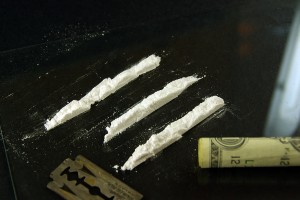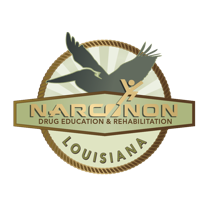Cocaine Addiction
 According to research cocaine is the most abused stimulant in America to date. It is the leading cause for drug related visits to the ER. It is not a new drug; cocaine has been used and abused since the middle of the 1800s. It is considered the champagne or Cadillac of drugs and is often considered a yuppie drug and a status symbol. Street names include flake, snow, yay, toot, blow, nose candy, her, she, and girl.
According to research cocaine is the most abused stimulant in America to date. It is the leading cause for drug related visits to the ER. It is not a new drug; cocaine has been used and abused since the middle of the 1800s. It is considered the champagne or Cadillac of drugs and is often considered a yuppie drug and a status symbol. Street names include flake, snow, yay, toot, blow, nose candy, her, she, and girl.
Addictive Properties of Cocaine
There is a myth that cocaine is not addictive because users do not experience physical withdrawal symptoms in the same way that alcohol, heroin or benzodiazepine addicts do. Contrary to this belief, cocaine is extremely addictive. It strongly stimulates the reward center of the brain. One’s senses, energy and stamina can be momentarily increased. There can also be an increased sense of well-being. The feeling itself is psychologically addictive. Also, once the drug wears off, the body can crave more of it. Its natural systems were bypassed and the “reward center” of the brain doesn’t quite know how to get going again – it wants a jump start with more cocaine.
Another reason that cocaine is so very addictive is because of the effect is has on an individual’s brain. Cocaine forces a release of dopamine into the brain and then inhibits the uptake of the dopamine causing a rush. The brain becomes dependent on the cocaine to release the dopamine so that when the person stops using it there is an initial crash. The person can become so dependent upon the dopamine that is released from the cocaine that a depression can ensue after a binge. The first few days are usually the worst when the brain is starved for the dopamine effects from the cocaine.
After a few days the neuron-balance, or the center in the brain that usually regulates dopamine in addition to other feel good chemical, starts its regular function again. After thirty days of abstinence it usually is in good working order. The longer the person stays away from the cocaine, the better they will start to feel again naturally. This is one reason some physicians feel that prescribing anti-depressants to someone who is coming off of cocaine is not a good idea because instead of letting the brain heal and start to function again naturally, they feel they are just substituting another drug for the cocaine that the person is going to become just as dependent upon. Also the side effects of many anti-depressants are horrendous and sometimes cause suicidal tendencies and many physicians just do not feel comfortable with taking the risk of prescribing said medicines.
Narconon cocaine abuse treatment is a great option to overcome cocaine addiction.
There is more to cocaine addiction in than just physical cravings. Often drug addicts will include cocaine in poly-drug abuse and the cocaine is used in conjunction with alcohol, heroin, sedatives such as Valium, Ativan, or other benzodiazepines, and also prescription opioids such as Oxycontin and hydrocodone. Abusers use these combinations together to achieve an energetic but calm feeling. The high is extreme. Another drug combination that achieves this effect and is used commonly among adolescents is cocaine, marijuana and alcohol.
Cocaine has been seen to be extremely to laboratory animals as well as people. In one study a monkey was given a bar to press to receive doses of cocaine. The amount of times the monkey pressed the bar kept increasing over time. At one point the monkey pressed the bar 12,800 times to receive one dose of cocaine at which point the experiment was abandoned. It is found laboratory animals enact stronger compulsive behavior in their effort to receive cocaine than with any other drug including opioids.
A person who is addicted to cocaine in many ways is very similar to a dog in search of food. Both will usually continue to consume any amount presented to them until there is either one, no more to be consumed or two, they have died from over consuming. This is especially true with cocaine sulfate or forms of cocaine that are smoked.
People will exhibit similar behavior in their attempt acquire more cocaine when they are addicted. If given the chance the cocaine addicted individual will choose to use cocaine above all other activities. It is seems at times this is all that occupies their mind. They will use all the cocaine that is in supply until it is gone often enough, even if it means staying up for days and sometimes even weeks at a time. There is documented evidence of cocaine addicted individuals performing all kinds of heinous acts to achieve more. Women have sold their children, families have been robbed and innocent victims have been mugged. Wealthy professionals such as doctors, lawyers, bankers and even athletes have had addictions that have been reported as costing hundreds and even thousands of dollars a day. They will sometimes go on binges with costs accruing at twenty to even fifty thousand dollars. When these addictions are discovered they often lead to loss of jobs, relationships, and sometimes even life. Cocaine addiction can be the tragedy of a lifetime.
Routes of Administration of Cocaine
Cocaine has many ways of being administered. The most common method of ingestion is snorting the powdery substance up the nose with either a straw or rolled up money. Another way people ingest this material is intravenously. Cocaine is mixed with water put into a syringe and injected directly the vein. This method causes a very quick high, as the cocaine hits the bloodstream and travels into the brain instantly. A third method is smoking the cocaine in either free base form or as crack cocaine. Free base is almost 100 percent pure but it this is very dangerous as a very flammable product such as ether is usually used to convert cocaine hydrochloride into cocaine sulfate. Too frequently individuals have been severely injured or died due to freebasing. Crack which is similar to freebasing is comparably safer to manufacture as only water, baking soda and heat are used to convert the cocaine. As crack and freebase are both smoked they are both extremely addictive because like intravenous use the cocaine enters the blood stream and therefore the brain very quickly. The rush is very intense in these methods but the letdown is equally as intense quickly leaving the user looking for more.
In South America cocaine sulfate can also be obtained in paste form often called , bazooka, basuco, pitici, pistol, pitillos, or tocos. It is widely smoked in this region.
Theories Regarding Cocaine Addiction
It is believed that addictive behavior is often a product of genetics and the environment in which one is raised. The genetics theory is somewhat of a debated issue because given the right circumstances i.e. exposure to cocaine anyone could become addicted to it. If any given lab animal is going to become addicted to it after only one exposure it could be said that humans would function the same way.
Obviously environment must factor into the equation a great deal because people would not become addicted to a substance they are not exposed to. Children will often copy their parents’ example and if one is raised in a family where substances are often and obviously abused what is to say that the children are not going to go down the same path. Also children of addicted parents often suffer from very stressful child hoods and often have mental and emotional disturbances due to these unfortunate circumstances. Drugs are often mind numbing and help give the illusion of escaping from ones present reality. Children who have terrible childhoods would likely enjoy this illusionary feeling of escape as oftentimes anything is better than dealing with current reality they are often forced into facing. What is a better distraction from reality than going on an endless quest in search of limitless amounts of cocaine?
Summary
Though there are theories as to why one person will become addicted to cocaine and another won’t, there is one certain fact when it comes to cocaine; When cocaine availability drops, so does the abuse and addiction. Therefore the ultimate solution to the cocaine problem is obvious, though perhaps difficult to activate.
